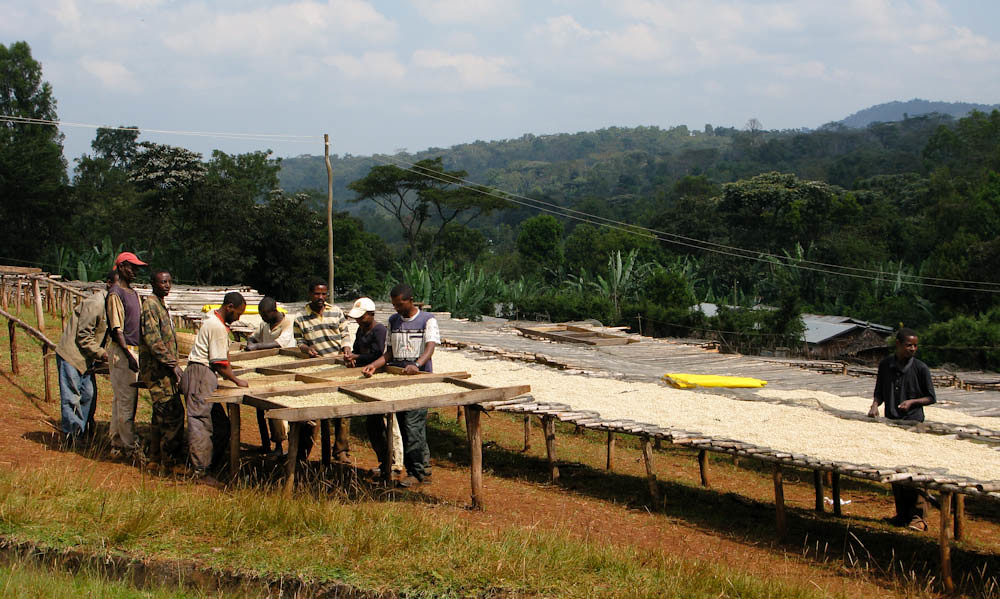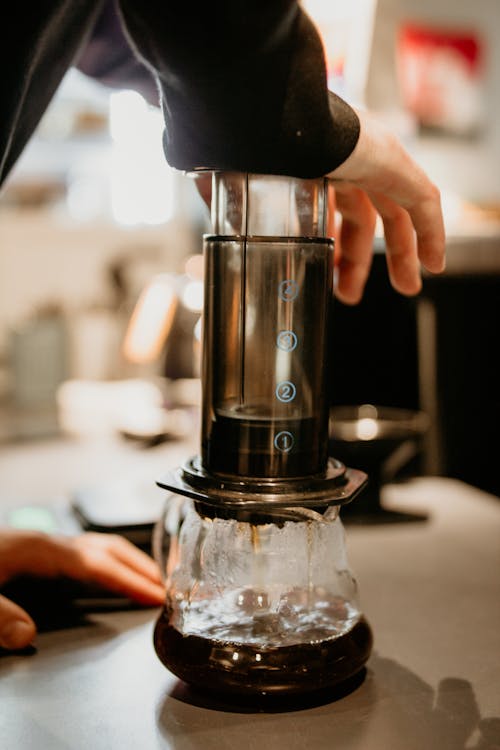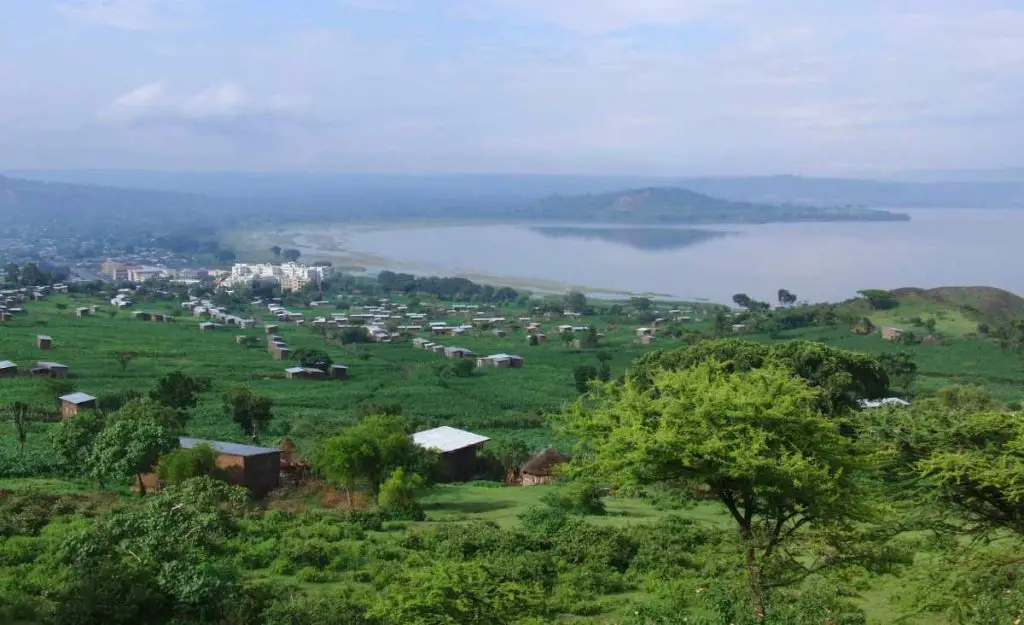Ethiopian Coffee – Why it’s so special
Ethiopia is considered the birthplace of coffee, and its coffee beans are highly regarded by coffee lovers worldwide. Ethiopian coffee is known for its unique flavor profile, with fruity and floral notes and a bright acidity. This is partly due to the country’s varied climate and growing conditions, as well as the use of heirloom varieties that have developed over centuries. In this blog post, we will explore the types of Ethiopian coffee and what makes them so special.
What is the history of Ethiopian coffee?
Ethiopia is widely considered to be the birthplace of coffee, and the country has a rich history and culture surrounding the beverage. Coffee was first discovered in the Kaffa region of Ethiopia, where it grew wild in the forests. Legend has it that a goat herder named Kaldi first noticed the energizing effects of coffee when his goats ate the coffee berries and became more lively and energetic.
Over time, coffee cultivation and trade became an important part of Ethiopian culture and economy. Ethiopian coffee is known for its unique flavor profiles and processing methods, which have been passed down through generations. Today, Ethiopia is the largest coffee producer in Africa and the fifth-largest in the world, with coffee exports accounting for a significant portion of the country’s economy.
Coffee plays a central role in Ethiopian culture, with traditional coffee ceremonies being a common social activity. The ceremony involves roasting, grinding, and brewing coffee beans, and is often accompanied by food, music, and conversation. The ceremony is a symbol of hospitality and friendship, and is an important part of Ethiopian social and cultural traditions.
Overall, the history of Ethiopian coffee is rich and complex, with coffee playing an important role in the country’s culture, economy, and identity.
Sidoma Coffee
Sidamo coffee is grown in the southern part of Ethiopia, in the highlands of the Sidamo region. It has a distinctively fruity flavor, with notes of blueberries and citrus, and a mild acidity. The coffee is grown at high altitudes, which helps to create a dense, complex flavor profile. Sidamo coffee is often considered one of the finest coffees in Ethiopia.
Check out the great selection of Sidoma and other great Ethiopian coffees on Amazon
Sidoma Coffee Flavor Profile
Sidamo coffee is known for its bright acidity, floral and fruity notes, and a medium body. The coffee has a delicate flavor profile, with hints of citrus, berries, and jasmine. The aroma is floral, with a slight hint of spice. The coffee has a clean and smooth finish, making it a popular choice among coffee enthusiasts.
Harrar coffee
Harrar coffee is grown in the eastern part of Ethiopia, in the Harari region. It is known for its intense, fruity flavor, with notes of dark chocolate and berries. The coffee is grown at a lower altitude than Sidamo coffee, which gives it a milder acidity. Harrar coffee is often dried using the natural process, where the coffee cherries are left to dry in the sun, which gives the coffee its distinctive fruity flavor.

Harrar Coffee Flavor Profile
Harrar coffee is known for its intense, fruity flavor profile, with notes of dark chocolate, blueberries, and cherries. The coffee has a medium to low acidity, with a full body and a slightly earthy aroma. The coffee has a unique complexity that comes from the natural processing method, which allows the coffee cherries to dry in the sun.
Check out the great selection of Harrar Coffees and other great Ethiopian coffees on Amazon
Yirgacheffe coffee
Yirgacheffe coffee is grown in the Yirgacheffe region of Ethiopia, which is known for its rich, fertile soil and ideal growing conditions. The coffee has a bright acidity, with floral and fruity notes, including hints of lemon and peach. Yirgacheffe coffee is often processed using the washed method, which helps to preserve its delicate flavor profile.

Yirgacheffe Coffee Flavor Profile
Yirgacheffe coffee is known for its bright acidity, floral and fruity notes, including hints of lemon and peach. The coffee has a medium body, with a smooth and clean finish. The aroma is floral, with hints of spice. The flavor profile of Yirgacheffe coffee is complex, with a delicate balance of sweetness, acidity, and fruitiness.
Check out the great selection of Yirgacheffe and other great Ethiopian coffees on Amazon
Limu coffee
Limu coffee is grown in the Limu region of Ethiopia, which is known for its tropical climate and fertile soil. The coffee has a mild acidity, with a smooth, balanced flavor that includes notes of chocolate and caramel. Limu coffee is often grown using sustainable farming practices, which helps to preserve the region’s unique ecosystem.

Limu Coffee Flavor Profile
Limu coffee is known for its balanced flavor profile, with a mild acidity, notes of chocolate and caramel, and a medium body. The coffee has a sweet and clean finish, with a nutty aroma. The flavor profile of Limu coffee is well-rounded, with a combination of sweetness, nuttiness, and chocolate notes.
Check out the great selection of Limu and other great Ethiopian coffees on Amazon
Guji coffee
Guji coffee is grown in the Guji region of Ethiopia, which is known for its high altitude and cool climate. The coffee has a bright acidity, with a fruity flavor that includes notes of blueberries and citrus. Guji coffee is often grown using organic farming practices, which helps to preserve the region’s biodiversity.
Flavor Profile
Guji coffee is known for its unique flavor profile, with notes of tropical fruits, berries, and citrus. The coffee has a bright and lively acidity, with a medium to light body. The aroma is floral, with hints of jasmine and lavender. The flavor profile of Guji coffee is complex, with a combination of sweetness, fruitiness, and floral notes. The coffee also has a subtle earthiness, with hints of cocoa and caramel. Overall, Guji coffee offers a delightful and unique taste experience, making it a popular choice among coffee lovers.
Check out the great selection of Guji and other great Ethiopian coffees on Amazon
What are the ways to brew Ethiopian coffee?
There are several ways to brew Ethiopian coffee, and the best method often depends on personal preference. However, here are some popular brewing methods for Ethiopian coffee:
How to brew Ethiopian Pour-Over Coffee
The pour-over method is a popular way to brew Ethiopian coffee, as it allows for a clean and nuanced flavor profile. Simply place a paper filter in a pour-over cone or dripper, add ground Ethiopian coffee, and slowly pour hot water over the coffee. The water should be just below boiling point (around 200°F or 93°C) and poured in a circular motion to ensure an even extraction. This method allows for a clean and bright flavor profile, with distinct fruity and floral notes.
Check out prices of pour over coffee makers on Amazon
How to brew Ethiopian French Press Coffee
The French press method is another popular way to brew Ethiopian coffee. Simply add ground coffee to a French press, pour hot water over the coffee, and let it steep for 4-5 minutes. Press down the plunger and pour the coffee into a mug. This method produces a rich and full-bodied coffee, with a slightly earthy flavor profile.
Check out French press brewers on Amazon
How to brew Ethiopian Aeropress Coffee
The Aeropress method is a popular way to brew Ethiopian coffee, as it allows for a clean and well-extracted cup. Simply place a paper filter in the Aeropress, add ground coffee, and pour hot water over the coffee. Allow the coffee to steep for 1-2 minutes, and then press the plunger to extract the coffee into a mug. This method produces a bright and nuanced coffee, with distinct fruity and floral notes.
Check out aeropress brewers on Amazon

How to brew Ethiopian Espresso Coffee
Ethiopian coffee can also be brewed as espresso, which produces a rich and intense cup of coffee. Simply grind Ethiopian coffee beans to a fine consistency, tamp the coffee into an espresso machine portafilter, and extract the coffee using high pressure. This method produces a rich and full-bodied coffee, with a distinct fruity and floral flavor profile.
I personally prefer manual, lever espresso machines when I brew Ethiopian coffee. There is a great selection of espresso machines on Amazon.

Overall, the best way to brew Ethiopian coffee depends on personal preference and the desired flavor profile. However, these brewing methods are popular ways to brew Ethiopian coffee and allow for a clean, nuanced, and flavorful cup of coffee.
Wrapping it up
In conclusion, Ethiopian coffee is renowned for its unique flavor profile and is highly valued by coffee connoisseurs worldwide. Each region in Ethiopia produces coffee with its distinct characteristics, and trying different types of Ethiopian coffee is a great way to experience the diversity of this fascinating country’s coffee culture.
In general, Ethiopian coffee is known for its unique and complex flavor profiles, with each region offering distinct taste characteristics. Ethiopian coffee is highly valued among coffee enthusiasts worldwide, and its unique flavor profile is a result of the country’s unique growing conditions, processing methods, and varietals.









